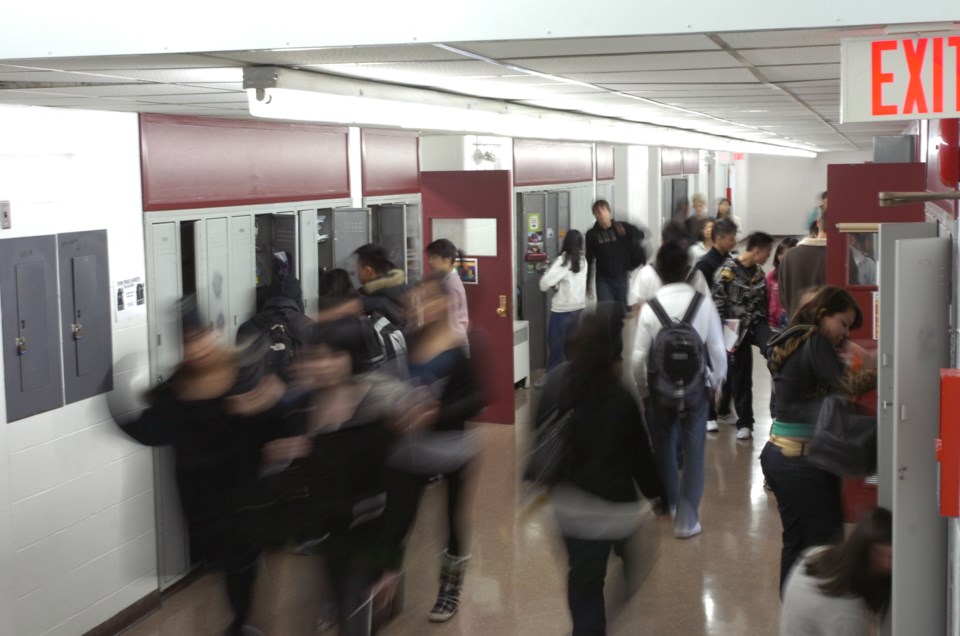As teachers and the government prepare for bargaining this year, hints are beginning to emerge about the arguments that could arise.
B.C. Teachers’ Federation president Glen Hansman wrote a letter to Education Minister Rob Fleming late last month expressing concerns about some of the language used in a controversial report released in December about how the province’s $5.7-billion funding for school districts is allocated. The report was written by a panel and makes many recommendations, but the most contentious are those about funding for students with special needs.
It’s an important issue because every child has a right to education, but supports vary across the province. B.C. is striving for “inclusive” education of all students, but sometimes students with special needs are left out or even asked to stay home if supports aren’t available.
The report calls for some of the funding for students with special needs to be allocated using a prevalence model — the expected number of students with special needs — rather than funding specific students. Supporters says this will save money in costs to identify students with special needs, but detractors say it means students may not get the supports they need.
Initially, the funding model was slated to change for fall 2019, but those changes have been put on hold, pending more consultation.
In a section of the report about inclusive education, the panel calls collective bargaining language a barrier to change and says, “this is especially evident in those school districts with highly complex and restrictive class composition language that is limiting school districts’ ability to meet student needs.”
Hansman, in his letter, takes umbrage with those comments, noting there is nothing stopping districts and the province from providing supports over and above those guaranteed by collective agreements. Hansman notes that the report conflates the collective agreements with provincial reporting requirements, which are not one and the same. Reporting requirements are imposed by the province, not required because of the collective agreements.
All of this relates back to the court case teachers won in November 2016, restoring class size, class composition and specialist teacher ratios stripped by the Liberal government in 2002. The contract that expires this June was negotiated after a five-week teachers’ strike in 2014, and this bargaining session will be the first since the court win.
Class composition rules govern how many students with special needs can be in a class before extra supports need to be added or class size needs to be reduced. The rules on this vary across the province, and about one-third of districts don’t have any rules. Some districts, notably Vancouver, have very strong and specific rules.
This leads to inequities across the province, a fact strongly pointed out in the report as being unfair to students and acknowledged by Hansman in the letter.
“To address these inequities across the province, though, the government’s approach should not be taking away what exists in some school districts, but to take steps to ensure similar protections are available in all 60 school districts,” Hansman writes. “This could be done through collective bargaining. It can also be done in the meantime by simply providing appropriate funding so that improved and comparable supports are in place for all students in B.C.”
It comes down to this. Everyone agrees it’s not fair that students in some areas of the province get more supports than those in othefr places. It’s clear all students deserve equal access to education, whether they have special needs or not and whether they live in Vancouver or Prince George.
The authors of the funding report say the best way around this is to wipe away the classification and counting of students with special needs and fund schools based on the law of averages.
The teachers say the best way to deal with it is to provide all students across the province access to a high level of support.
The elephant in the room is the cost. Since 2016-17, $591 million has been added to the education budget, mostly to fund the restored contracts required by the court case. Nearly 4,000 new teachers have been hired. Those amounts would be considerably higher if every district was staffed at the same level as, say, Vancouver.
Students, parents, trustees, teachers and the public should all prepare for some tense negotiations, with how best to pay for support for students with special needs likely to be at the heart of it all. Hang onto your hat — it could be a wild ride.



